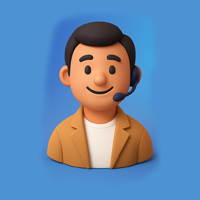
Imagine
You walk into a store, and the lights are flickering, the aisles are messy, and no one is around to help. You’d probably turn around and leave, right? The same thing happens online. If your ecommerce store is slow, confusing, or unhelpful, customers won’t stick around. And that means fewer sales.
But here’s the good news: Improving ecommerce customer experience doesn’t have to be complicated. It’s about making small, thoughtful changes that add up to a smoother, more enjoyable shopping journey. When customers feel valued and understood, they’re more likely to buy—and come back for more.
In this guide, we’ll walk through practical, real-world strategies to enhance every step of the customer journey. From the moment someone lands on your site to the second they unbox their order, we’ll show you how to create an experience that turns first-time buyers into loyal fans.
Need help setting up an ecommerce store that converts? Contact TCU if you need to set up your ecommerce store with a focus on customer experience and sales growth.
What Is Ecommerce Customer Experience (And Why Should You Care?)
Ecommerce customer experience is about how customers feel when they interact with your online store. It’s not just about the products you sell, it’s about how easy it is to find what they want, how smooth the checkout process is, and how they feel after their purchase arrives.
Why It Matters More Than You Think
Think about the last time you had a great shopping experience. Maybe the website was fast, the checkout was simple, and your order arrived quickly with a nice little thank-you note. How did that make you feel? Probably pretty good—and likely to shop there again.
Now, think about a bad experience. Maybe the site was slow, the product description was unclear, or the checkout process was confusing. Chances are, you didn’t go back.
Here’s the hard truth: 86% of buyers will pay more for a better customer experience (PwC). That means if your store is easy to use, helpful, and enjoyable, customers will not only buy from you—they’ll come back, spend more, and tell their friends.
On the other hand, a poor experience leads to:
- High cart abandonment (nearly 70% of shoppers leave if the process is frustrating).
- Negative reviews (which scare away potential buyers).
- Fewer repeat customers (people won’t return if they had a bad experience).
The 3 Key Moments in the Customer Journey
To improve ecommerce customer experience, focus on these three stages:
- Before They Buy – How easy is it for customers to find and explore your products?
- During Checkout – Is the buying process smooth and stress-free?
- After the Sale – Do customers feel valued and excited about their purchase?
Let’s dive into how to optimize each stage for better sales and happier customers.
Stage 1: Before They Buy – Make Shopping Easy and Enjoyable
First impressions matter. If your website is slow, confusing, or unappealing, customers will leave—and they might never come back.
1. Speed Up Your Website (Or Risk Losing Sales)
Did you know that a 1-second delay in page load time can drop conversions by 7%? That’s a lot of lost sales just because your site is slow.
How to Fix It:
- Optimize images (use tools to reduce file sizes).
- Enable browser caching (so returning visitors load pages faster).
- Choose a fast hosting provider (avoid cheap, slow options).
- Minimize plugins (too many can slow down your site).
- Use a lightweight theme (avoid overly complex designs).
Real-Life Example: Amazon found that every 100 milliseconds of delay cost them 1% in sales. If Amazon cares this much about speed, your store should too.
2. Simplify Navigation (So Customers Find What They Want Fast)
If shoppers can’t find a product in 3 clicks or less, they’ll leave. A confusing menu or poor search function kills sales.
How to Improve It:
- Use clear categories (e.g., “Men’s Shoes," “Women’s Dresses," “Sale”).
- Add a search bar with autocomplete (so customers find products instantly).
- Include filters (price, size, color, ratings) to help shoppers narrow options.
- Highlight bestsellers and new arrivals on the homepage.
Example: ASOS uses mega menus with images and subcategories, making it easy for shoppers to find exactly what they want.
3. Write Product Descriptions That Sell (Not Just Describe)
Weak product descriptions = lost sales. Customers can’t touch or try your products online, so your descriptions must paint a picture, answer questions, and persuade.
What Makes a Great Product Description?
- Focus on benefits, not just features – Instead of “100% cotton,” say “Soft, breathable fabric that keeps you cool all day.”
- Use bullet points for easy reading.
- Include social proof (e.g., “Rated 4.9/5 by 2,000+ happy customers”).
- Answer common questions (sizing, materials, care instructions).
- Add urgency (e.g., “Only 3 left in stock!”).
Bad Example: “Blue T-Shirt. 100% cotton. Sizes S-XXL.”
Good Example: “The Ultimate Comfort Tee – Your New Wardrobe Staple”
- Super-soft 100% cotton
- Classic fit
- Rated 5 stars
- Limited stock
4. Use High-Quality Images and Videos (Because Customers Can’t Touch Your Products)
Blurry, poorly lit photos = instant distrust. Customers rely on images to make buying decisions, so invest in professional product photography.
Tips for Product Images That Convert:
- Show multiple angles (front, back, side, close-ups).
- Include lifestyle shots (e.g., a coffee mug in a cozy kitchen setting).
- Add zoom functionality so customers can see details.
- Use videos (e.g., 360° views, unboxing, demo videos).
Example: Warby Parker lets customers virtually try on glasses using their phone camera, this reduces returns and increases confidence in purchases.
5. Offer Live Chat and Quick Support (Because Customers Have Questions)
44% of online shoppers say that having questions answered by a live person during an online purchase is one of the most important features a website can offer (Forrester).
How to Provide Instant Support:
- Add a live chat widget
- Use chatbots for FAQs
- Offer WhatsApp or Messenger support
- Display a phone number prominently
Real-World Impact: A study found that businesses using live chat see a 20% increase in conversions.
Stage 2: During Checkout – Make It Smooth and Stress-Free
You’ve got a shopper ready to buy—don’t lose them at checkout. A complicated or slow checkout process is one of the biggest causes of cart abandonment.
1. Simplify the Checkout Process (Fewer Steps = More Sales)
Baymard Institute found that 26% of shoppers abandon carts because checkout is too long or complicated.
How to Fix It:
- Offer guest checkout
- Reduce form fields
- Use autofill for addresses and payment details.
- Show progress indicators
- Allow multiple payment options
Example: Amazon’s 1-Click Ordering is a masterclass in reducing friction—customers can buy in seconds.
2. Be Transparent About Costs (No Surprise Fees!)
Hidden costs are the #1 reason for cart abandonment. If shipping, taxes, or fees aren’t clear upfront, customers will leave at the last step.
How to Avoid This:
- Display shipping costs early on the product page or cart.
- Offer free shipping thresholds
- Show estimated taxes in the cart
- Be upfront about return policies
Stat: 55% of shoppers abandon carts due to unexpected costs (Baymard).
3. Build Trust with Security Badges and Guarantees
Customers worry about fraud and data breaches. If your site doesn’t look secure, they won’t enter their payment details.
How to Build Trust:
- Display security badges
- Show trust signals
- Include customer reviews and ratings on product pages.
- Offer a clear return policy
Example: Shopify stores often display “Powered by Shopify” badges, which reassure customers that their payment info is safe.
Stage 3: After the Sale – Turn Buyers Into Repeat Customers
The customer experience doesn’t end at checkout. What happens after the sale determines whether customers come back.
1. Send a Thank-You Email (And Make It Personal)
A simple “Thank you for your order” email goes a long way. But to really stand out, personalize it.
What to Include:
- Order confirmation with details and tracking info.
- A personal note e.g., “We’re so excited you chose (XYZ Product)”
- Next steps (when to expect delivery, how to track their order).
- A discount for their next purchase e.g., “Here’s 10% off your next order”
2. Provide Real-Time Order Tracking (Because Customers Hate Waiting in the Dark)
69% of consumers say that order tracking is the most important feature for a positive post-purchase experience.
How to Do It Right:
- Send automated shipping updates
- Provide a tracking link
- Offer delivery estimates
- Include a photo of the packed order
Example: Sephora sends shipping updates with estimated delivery times and even lets customers rate their unboxing experience.
3. Delight Customers with Unboxing Experiences (Because First Impressions Matter)
The moment a customer opens their package is a golden opportunity to create loyalty. A great unboxing experience can turn a one-time buyer into a repeat customer and brand advocate.
How to Make Unboxing Special:
- Use branded packaging
- Include a handwritten thank-you note.
- Add a free sample or small gift
- Make it Instagram-worthy
Real-World Example: Glossier’s pink pouches and stickers became so iconic that customers post unboxing videos, giving the brand free marketing.
4. Ask for Reviews (And Make It Easy)
93% of consumers read reviews before buying, and 84% trust online reviews as much as personal recommendations.
How to Get More Reviews:
- Send a follow-up email after delivery asking for a review.
- Offer an incentive
- Make it easy
- Respond to reviews
5. Offer Loyalty Programs (Because Repeat Customers Spend More)
Repeat customers spend 67% more than new. A loyalty program keeps them coming back.
How to Start a Simple Loyalty Program:
- Points system (e.g., “Earn 1 point per $1 spent, 100 points = $10 off”).
- VIP tiers (e.g., Silver, Gold, Platinum with increasing perks).
- Birthday discounts (a small gift on their special day).
- Exclusive early access to sales or new products.
Example: Starbucks’ Rewards Program is a masterclass in loyalty—customers earn stars for purchases, which they can redeem for free drinks and food.
Quick Wins to Increase Ecommerce Sales Right Now
Want to see immediate improvements in your ecommerce customer experience and sales? Try these easy, high-impact strategies:
1. Add a Live Chat Pop-Up (Even a Simple One Helps)
2. Offer Free Shipping (Even If You Bake It Into Prices)
3. Use Exit-Intent Popups (To Save Abandoning Visitors)
4. Retarget Cart Abandoners with Email or Ads
5. Highlight Customer Testimonials (Social Proof = More Sales)
Final Thoughts!
Improving ecommerce customer experience isn’t about overhauling your entire business overnight. It’s about making small, strategic tweaks that add up to happier customers and higher sales.
Start with one or two changes from this guide—whether it’s speeding up your site, simplifying checkout, or adding live chat—and watch how it impacts your conversions. Then, keep optimizing based on customer feedback and data.
Remember: The best ecommerce stores aren’t the ones with the most products, they’re the ones that make shopping effortless, enjoyable, and rewarding.

